Form 155.16-N3 (899), IsoFlow Absorption Chillers with Buffalo ...
Form 155.16-N3 (899), IsoFlow Absorption Chillers with Buffalo ...
Form 155.16-N3 (899), IsoFlow Absorption Chillers with Buffalo ...
You also want an ePaper? Increase the reach of your titles
YUMPU automatically turns print PDFs into web optimized ePapers that Google loves.
coolant must be provided to cool the maximum condensate<br />
flow to the desired temperature. Coolers may be<br />
air or evaporatively cooled, providing they can produce<br />
the desired leaving condensate temperature. Coolant flow<br />
could be manually set for maximum load and allowed to<br />
operate continuously at that level <strong>with</strong> no operating difficulties,<br />
but the poor economics of such an arrangement<br />
make automatic control preferable.<br />
Auxiliary Condensate Receiver – An auxiliary condensate<br />
receiver must be used if the main condensate<br />
receiver is located a great distance from the chiller or<br />
above the chiller. An auxiliary condensate pump is used<br />
to send condensate from the auxiliary receiver to the<br />
main condensate receiver.<br />
26<br />
The auxiliary condensate receiver should be located at<br />
floor level as close to the absorption unit as possible. A<br />
check valve in the auxiliary condensate pump discharge<br />
line is recommended where condensate backflow may<br />
occur.<br />
Auxiliary condensate receivers <strong>with</strong> condensate pumps<br />
are available as a package. They include a float or other<br />
control to cycle the pump to suit the condensate flow.<br />
Manufacturers’ recommendations concerning selection<br />
and application of these packages should be followed.<br />
YORK INTERNATIONAL


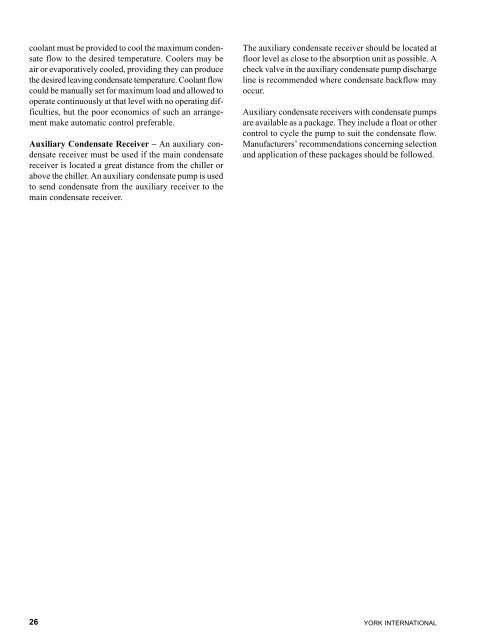
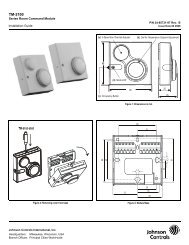
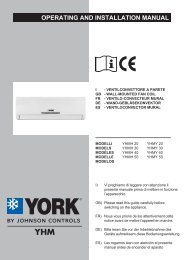



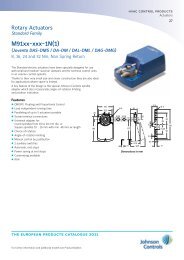


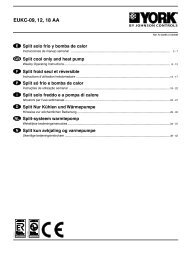
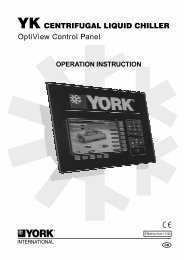
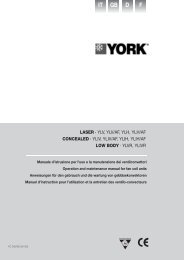
![[PDF] •Outdoor installation 4-5 - Johnson Controls](https://img.yumpu.com/10374038/1/184x260/pdf-ooutdoor-installation-4-5-johnson-controls.jpg?quality=85)
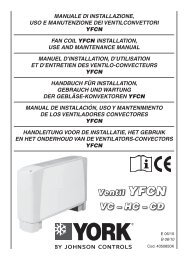
![[PDF] The European Products Catalogue 2012 - Johnson Controls](https://img.yumpu.com/3624903/1/184x260/pdf-the-european-products-catalogue-2012-johnson-controls.jpg?quality=85)